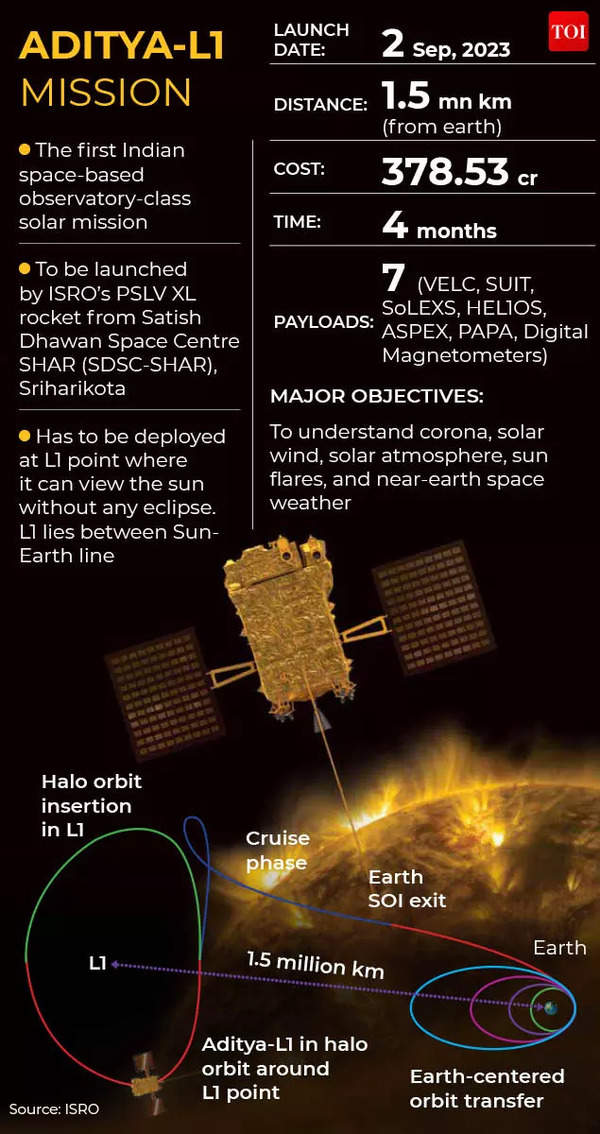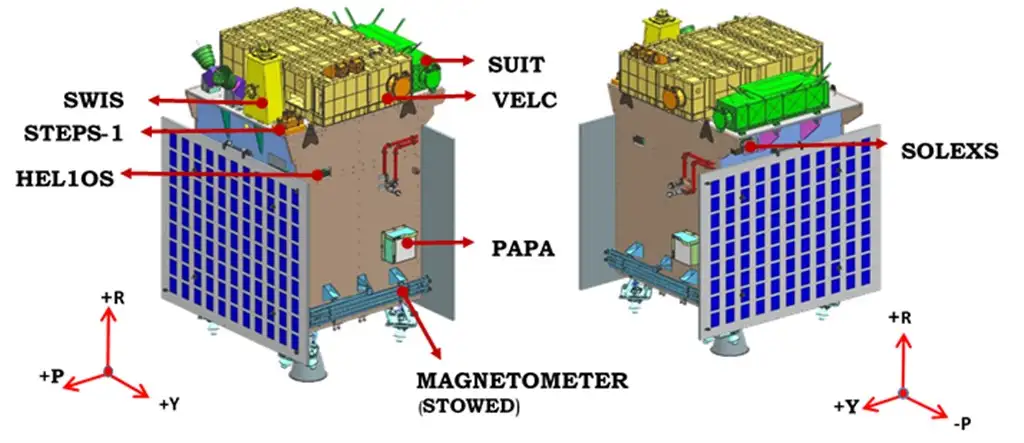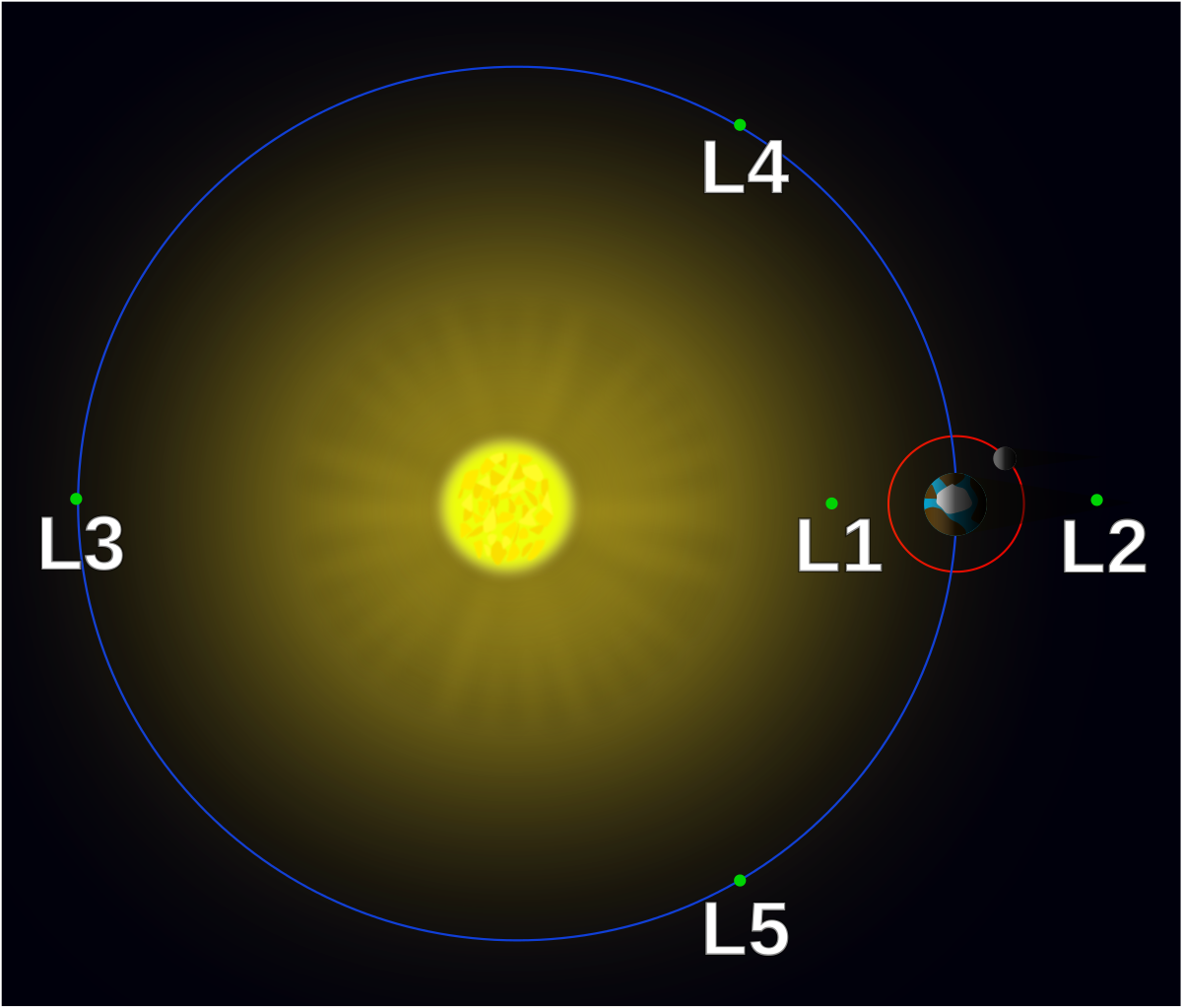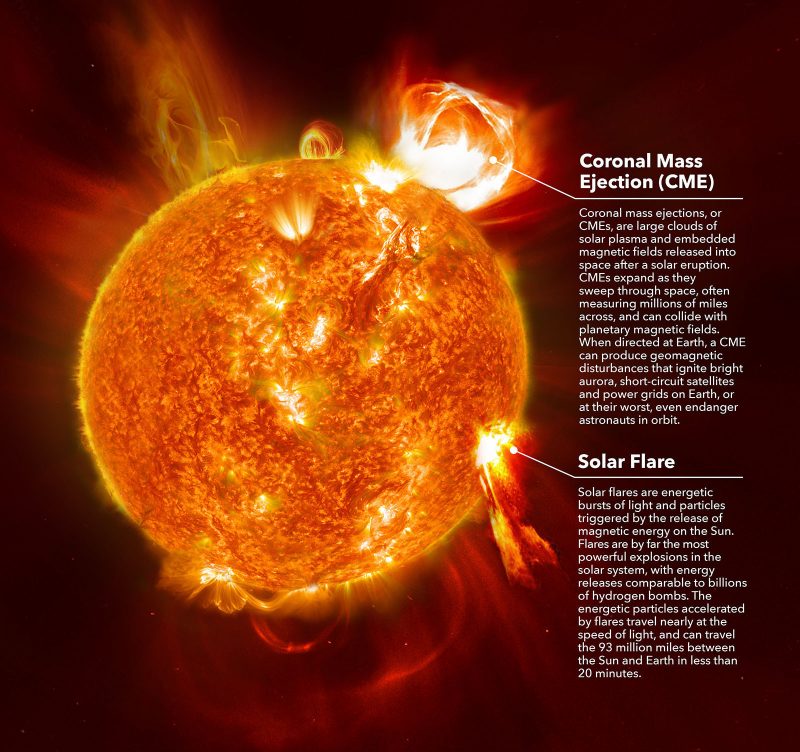Aditya L1 Mission
Feb, 2025
•10 min read
Why in News?
India launched its first solar mission, Aditya-L1, on September 2, 2023, with the aim of studying the Sun from a unique vantage point at the Sun-Earth Lagrange Point 1 (L1). This remarkable mission, led by the Indian Space Research Organization (ISRO), establishes India as a significant contributor to solar studies and space-based solar observatories.
Positioned at L1, approximately 1.5 million kilometers from Earth, Aditya-L1 ensures a constant, uninterrupted view of the Sun, enabling a comprehensive study of solar phenomena and their impact on our solar system.
Introduction
The Aditya-L1 mission signifies India’s leap into the realm of solar and space research. Launched using the Polar Satellite Launch Vehicle (PSLV-XL), it is a groundbreaking step toward advancing our understanding of the Sun's dynamic behavior.
This solar mission aims to uncover crucial details about solar activities, improve space weather predictions, and explore their cascading effects on Earth and our solar system. The mission also serves as a testament to ISRO's growing expertise in tackling ambitious space challenges.

Why is There a Need for a Solar Mission?
Source of Energy in Our Solar System
- The Sun, the largest object in our solar system, is a hot ball of hydrogen and helium gases, essential for sustaining life on Earth. Its core reaches temperatures of 15 million °C, enabling nuclear fusion, which powers its radiance.
- Solar activity directly impacts planetary systems and Earth’s technology, including satellite communications, navigation, and power grids.
Scientific Mysteries
- Despite extensive research, fundamental questions about solar phenomena remain unresolved, such as:
- Why is the Sun's corona hotter than its surface?
- What drives the acceleration of the solar wind?
- How do solar flares and Coronal Mass Ejections (CMEs) originate?
- Understanding these mysteries would not only benefit our knowledge of the Sun but also contribute to fundamental physics by unraveling the nature of stellar behavior and magnetic fields.
Impact on Technology and Space Weather
- Solar storms can disrupt Earth’s infrastructure, causing communication blackouts, power outages, and damage to satellites. A solar mission like Aditya-L1 is critical for developing advanced space weather forecasting systems.
Scientific Objectives
- Studying the heating mechanisms of the Sun’s corona and the energy transfer responsible for solar wind acceleration.
- Investigating the origin and dynamics of solar flares and coronal mass ejections (CMEs) to understand their impact on space weather.
- Examining the coupling between different layers of the solar atmosphere and the processes governing its dynamics.
- Observing the distribution and anisotropy of solar winds to enhance the understanding of fundamental physics and improve space weather predictions.
Aditya-L1 Mission: Objectives and Capabilities
Mission Overview
- Aditya-L1 is designed to study the Sun's atmosphere, magnetic field, and radiation in multiple wavelengths. It is the first Indian mission to position itself at the gravitationally stable Sun-Earth L1 point, enabling uninterrupted observations.
- Equipped with seven scientific payloads, Aditya-L1 will provide data on the photosphere, chromosphere, and corona of the Sun.

Payloads and Their Roles

Lagrangian Points and Importance of L1
What are Lagrange Points?
- Lagrange points are positions in space where the gravitational forces of two large bodies, such as the Earth and Sun, balance out.
- These points provide stable locations for spacecraft with minimal fuel consumption.
Significance of the L1 Point
- Offers a direct and continuous view of the Sun.
- Enables early detection of solar storms, CMEs, and flares.
- Reduces operational costs by requiring minimal fuel to maintain position.

Aditya-L1 Mission Phases
- Earth-Bound Phase: The spacecraft performed five velocity-enhancing manoeuvres over 16 days.
- Trans-Lagrangian Insertion: Aditya-L1 entered a 110-day cruise phase to L1, ensuring trajectory stability.
- Halo Orbit Operations: On reaching L1, the spacecraft began orbiting in a halo trajectory to collect solar data.
Significance of the Mission
India’s Solar Observatory
- Aditya-L1 establishes India as a leading spacefaring nation, joining NASA and ESA in solar research.
Technological Advancement
- The mission demonstrates ISRO's growing expertise in developing payloads for interplanetary and solar research.
Impact on Space Weather Prediction
- By monitoring solar activity in real-time, Aditya-L1 will secure Earth's technological infrastructure from solar storms.
Expanding Solar Science
- The mission lays the groundwork for future explorations of the Sun’s polar regions and deep space missions.
Global Solar Research Initiatives
- Helios 2 Solar Probe (1976): Early solar probe by NASA and West Germany.
- NASA’s Parker Solar Probe (2018): Studies the Sun’s corona and solar wind.
- ESA-NASA Solar Orbiter (2020): Focuses on heliophysics and the Sun-Earth system
- Other Missions: IRIS, Hinode, and STEREO contribute significantly to solar studies.
Conclusion
Aditya-L1 is a landmark in India’s space exploration journey. By addressing unresolved solar mysteries, it strengthens our understanding of the Sun’s influence on our solar system and advances research in fundamental physics. The mission not only enhances space weather prediction but also sets the stage for future solar explorations like Aditya-L2, demonstrating India’s commitment to becoming a leader in space science.
FAQs
How many countries have launched their solar missions before India?
- Before India’s Aditya-L1 mission, four countries had launched dedicated solar missions: the USA (Parker Solar Probe), the European Space Agency (Solar Orbiter), Japan (Hinode), and China (ASO-S).
What is the distance between the Sun & the Earth?
- The average distance between the Sun and the Earth is approximately 149.6 million km (1 Astronomical Unit - AU).
How big is the Sun in comparison to the Earth?
- The Sun's diameter is about 109 times that of Earth, and its volume can accommodate approximately 1.3 million Earths.
What is the difference between solar flares & solar storms?
- Solar flares are intense bursts of radiation from the Sun’s surface, while solar storms (including coronal mass ejections - CMEs) involve massive plasma ejections that can disrupt Earth's magnetosphere, leading to geomagnetic storms.

Mains PYQs
- What is the main task of India’s third mood mission which could not be achieved in its earlier mission? List the countries that have achieved this task. Introduce the subsystems in the spacecraft launched and explain the role of the ‘Virtual Launch Control Centre’ at the Vikram Sarabhai Space Centre which contributed to the successful launch from Sriharikota (2023/15M).
- India has achieved remarkable successes in unmanned space missions including the Chandrayaan and Mars Orbiter Mission, but has not ventured into manned space mission, both in terms of technology and logistics? Explain critically (2017/10M).
Prelims PYQs
If a major solar storm (solar flare) reaches the Earth, which of the following are the possible effects on the Earth? (2022)
- GPS and navigation systems could fail.
- Tsunamis could occur at equatorial regions.
- Power grids could be damaged.
- Intense auroras could occur over much of the Earth.
- Forest fires could take place over much of the planet.
- Orbits of the satellites could be disturbed
- Shortwave radio communication of the aircraft flying over polar regions could be interrupted.
Select the correct answer using the code given below:
A. 1, 2, 4 and 5 only
B. 2, 3, 5, 6 and 7 only
C. 1, 3, 4, 6 and 7 only
D. 1, 2, 3, 4, 5, 6 and


